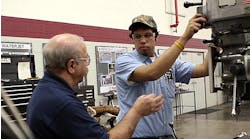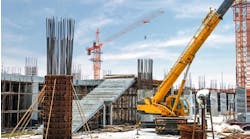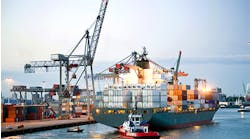This is the column I am compelled to write every four years, the one that is drafted just prior to a close presidential election, with the polls thisclose and no one confident of the outcome. There is no ability – or propriety – for me to anticipate an outcome. Which is fine with me, because the things that I care most about, the things I see shaping our lives and destinies, are not the political initiatives we undertake but the way we commit our resources (natural, intellectual, manual, technological, and financial) to improving our lives and our world. That may seem vague, but consider this: metalcasting has been advancing as a science and an industry for thousands of years. It will continue to progress after November 6.
This is the thought that occurred to me a few weeks back as I started to concentrate on this issue: the robot issue. I was wandering through IMTS 2012, the biannual exhibition of manufacturing technology that fills Chicago's McCormick Place with CNC machines, tooling systems, and, of course, robots. There are robots for everything.
The prevailing trend in robotic capability, emphasized by numerous exhibitors there, is machine tending: the ability of robots to handle castings, bar stock or other workpieces, load and unload machines, place fixtures and tooling, all of this guided by programming that is a further extension of the CNC software used to set toolpaths, spindle speeds, feed rates, etc. Thus, the robot is the machinist of the future.
Now, according to that explanation, this is all good news. It shows the progress of manufacturing and proves the ingenuity of the engineers who are driving that sector of technology. It also indicates the possibilities for manufacturers to increase the productivity of their operations with the precision and consistency that robots are able to achieve. There are also safety considerations, which is even more relevant in operations involving hot metal pouring and handling.
But it's not good news if the prerogative is employment, or rather, unemployment. Robots replace workers — who, regardless of their skills, are less productive than robots because they need to take breaks, are less reliable because they become tired or distracted, and are more expensive because everyone deserves to be rewarded according to their ability.
‘Workers displaced by machines' may be an old cliché, but unemployment is widely believed to be the problem inhibiting economic growth. And for that reason I had to pause amid the flexing robots at IMTS to comprehend the meaning of a sincere initiative presented there by The Society of Manufacturing Engineers, the "Workforce Imperative: A Manufacturing Education Strategy." If we need so many workers in manufacturing, why do we need these robots?
SME's "national action plan" calls on manufacturers, educators, professional organizations and government to coordinate and standardize efforts to prepare workers for high-tech manufacturing jobs. They cited a current need for 600,000 such workers, a need that will grow to 3 million by 2015, they predict. Why, I wondered, are the experts calling from such an effort from the podium while all around are displays of robots getting the job done more reliably and cost-effectively?
The problem, for me, at that moment, was the failure of my imagination. Those 600,000 workers are needed not simply to tend CNCs or pour ladles of hot metal. The lack of skilled workers is the shortage of people willing and available to dig into the details of how manufacturing operations work, who can learn to program a robot to perform for a specific function, who will take time to learn the proper way to pour a casting, and who can identify better ways to organize a workshop.
Unemployment is a problem — it has hovered around 8% (or higher, if counting individuals who have quit applying for work) for most of the past two years — but it is a symptom of the weak recovery, not its cause. The latest economic data prior to the November election we're told will shape our future indicates that the U.S. economy expanded by only 1.7% through the first nine months of 2012. We are in recovery from the recession of 2008-09, but it's a feeble recovery, and an important reason that it has been so feeble is the misunderstanding between those who believe economic growth will follow from detailed planning and coordinated initiatives, and those who understand that growth will result from random incidents of individuals accomplishing greater returns from their available resources.
The visitors and exhibitors at IMTS understood this: every bit of anecdotal evidence indicated record-breaking orders for new machine tools and other equipment, including robots. The progress of manufacturing, and the future of our economy and society, does not rely on specific outcomes, but on how well we apply all that we've already earned, and learned and accomplished.








